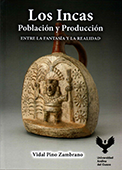The Incas Population and Production: between fantasy and reality
DOI:
https://doi.org/10.15381/espiral.v3i6.23578Keywords:
Population in 1530, Resources in the Tahuantinsuyo, Qhapaq Ñan and populationAbstract
It must be highlighted the methodology used in this book to rebuild theoretically the population back to 1530 as well as the productive resources composed by zones under irrigation, dry lands, importance of forager areas for cattle raising and the relation that the population had with forests, sources of wood for buildings and energy for life. The analysis of demographic weight leads the author to define the formation of 23 big regional spaces. Stands out, in one side, the technology innovations as well as the invention and diffusion of the Chaquitaclla, a varied tool used in agriculture, adapted to the topography conditions of the Andes; in other side, the importance of cattle development based in “ahijaderos” systems (banyards). Both innovations had an important synergistic effect in raising production and productivity of agriculture activities; a key issue to ameliorate feeding of population, in terms of quantity and quality, that had an effect in population growth. Other important aspect is the relationship between the population and the great Qhapaq Ñan road network, certainly an engineering feat built by the Incas

Downloads
Published
Issue
Section
License
Copyright (c) 2022 Jean-Jacques Decoster

This work is licensed under a Creative Commons Attribution 4.0 International License.
LOS AUTORES RETIENEN SUS DERECHOS:
a. Los autores retienen sus derechos de marca y patente, y también sobre cualquier proceso o procedimiento descrito en el artículo.
b. Los autores retienen el derecho de compartir, copiar, distribuir, ejecutar y comunicar públicamente el artículo publicado en la revista Espiral (por ejemplo, colocarlo en un repositorio institucional o publicarlo en un libro), con un reconocimiento de su publicación inicial en la revista Espiral.
c. Los autores retienen el derecho a hacer una posterior publicación de su trabajo, de utilizar el artículo o cualquier parte de aquel (por ejemplo: una compilación de sus trabajos, notas para conferencias, tesis, o para un libro), siempre que indiquen la fuente de publicación (autores del trabajo, revista, volumen, número y fecha).





